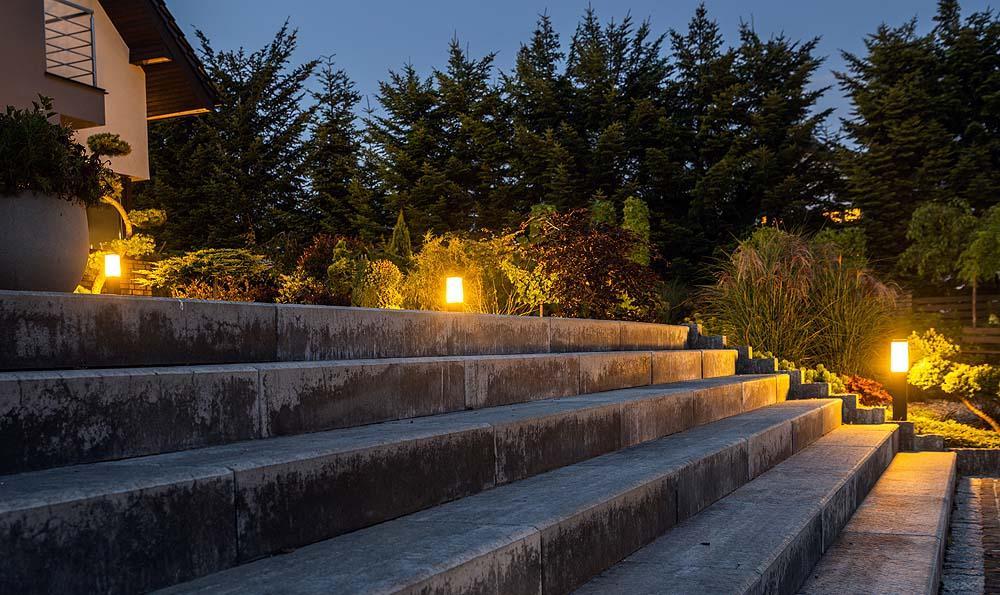
How Bright Should My Garden Lights Be?
Share
By Steven Stead
Choosing the right brightness for your garden lights can be tricky.
If you choose lights which are too dim, you’ll struggle to see what you’re doing and trip hazards will be concealed.
If they’re too bright, you'll cause eye strain, annoy any neighbours you have nearby, affect wildlife and perhaps even attract unwanted attention.
This expert guide will help you find the right balance so you can enjoy Light For The Garden after the sun goes down.
Understanding Lumens
Our first step is to understand Lumens, which measures how much light a bulb is able to produce.
Put simply, the higher the lumens, the brighter the light.
You will have heard about watts but that refers to energy use rather than brightness and, with modern LEDs, lumens is the factor you use for decision making.
Recommended Lumens for Different Garden Zones
While it’s impossible to give an absolute answer in terms of the lumens you need in your garden, we can give you a working guide that will be a great starting point:
· Path Lighting: 100-200 Lumens
This should keep your pathways safely lit with a soft glow that will guide your steps without being overpowering.

· Step Lighting: 12-100 Lumens
Steps can, of course, be a trip hazard so good lighting is essential. A lower lumen count is fine for smaller steps but go brighter for larger or more complex staircases.

· Large Areas For Security Or Larger Features: 700-1300 Lumens
Floodlights aren’t the most sophisticated but have a role to play when it comes to security or if you’re wanting to draw attention to a feature in your garden.
· Smaller Areas For Security: 300-700 Lumens
Motion sensor lights are great for security around your home and garden. They can deter intruders and light your way when you arrive home. A good range to choose from is 300-700 lumens.

· Pond/Pool Lighting: 200-400 Lumens
When it comes to pool lighting, most people prefer to create a relaxing ambiance with softer lighting that has a warmer feel. Keeping it in this range provides enough light for safety and enjoyment.
· Hardscape Lighting (on walls): 50-185+ Lumens
If you’re looking to gently highlight walls or architectural features then a subtle glow will do the job and 50-185 lumens should be sufficient. However, if you’re looking to generate more light around an entrance then you would probably want to go above 185 lumens.
· Landscape Lighting: 50-300 Lumens
If you’re wanting to show off plants then lights with a lowly 50 lumens are all you need. Each light will gently draw attention to a small number of plants in its immediate vicinity. That means if you’re looking to show off a number of plants in a border area then you’ll need quite a few landscape lights to do that effectively. If you have a large border area then you could go for a light around 300 lumens but that’s unlikely to be as subtle. Higher brightnesses are what you will need if you want to light up larger trees.
How To Get It Right
Now you have a rough guide to get you started, we recommend buying a few different types of lights and having them installed. That will then let you assess their effectiveness, what suits your garden and what you like. You will then know what exactly you need to not only complete the project but transform your garden into a beautiful outdoor space. You can find out more in our blog post on Planning Outdoor Lighting Using Layered Lighting Design.
Why Choose LEDs?
For garden lighting, LEDs are the way to go as they’re energy-efficient and last much longer than traditional bulbs.
However, there are significant differences in the quality and longevity of LED light bulbs.
We recommend trying to find a manufacturer who will give you a five-year guarantee, such as Well Lit, so you know you’ll get value for money.
Other Things to Consider
Besides lumens, here are a couple of other factors to think about:
· Scattering Angle
This is a metric that will sometimes be supplied with lights (not light bulbs) to let you see if they send their light out across a narrow, wide or even 360-degree angle. This will help you with your planning.
· Wattage: Energy Consumption
Wattage measures how much energy your lights use. While lumens tell you about brightness, wattage tells you about running costs. Keep an eye on wattage, especially if you're installing lots of lights.
FAQs About How Bright Should My Garden Lights Be?
Q: How do I know if my garden lights are too bright?
A: If your lights are causing glare, bothering your neighbours or attracting insects excessively then they're probably too bright. Try lowering the lumens or adjusting the direction of the lights.
Q: How can I make sure I don’t affect wildlife with my outdoor lights?
A: If your garden is a haven for wildlife then the recommendations from the Royal Horticultural Society is to only light the areas you really need to and try to keep these to a low light. Read their excellent How To Light Your Garden Without Disturbing Wildlife guide for more.
Q: Can I mix different lumen levels in my garden?
A: Yes. That’s actually one of the cornerstones of layered lighting design, which you can read more about in our blog post. Use brighter lights for safety and security, and dimmer lights for creating a relaxing atmosphere.
Q: What's the best type of bulb for outdoor lights?
A: LEDs are generally the best choice due to their energy efficiency, long lifespan, and performance in various weather conditions.
Q: What IP rating should I choose for my outdoor lights?
A: We recommend at least IP44 but ideally more. You can read more in our blog post on IP ratings for outdoor lights.
